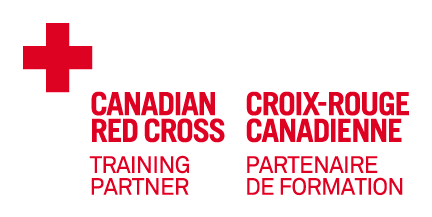Study: AEDs Missing Near the Scene of Three-Quarters of Cardiac Arrests
Web Newswire – CHICAGO
More than 75 percent of cardiac arrest victims are stricken too far away from an automated external defibrillator for the lifesaving device to be obtained quickly enough to offer the best chance at saving their lives, according to new research from the Perelman School of Medicine at the University of Pennsylvania that will be presented today at the annual meeting of Society for Academic Emergency Medicine.
The findings may offer an important clue about why, despite CPR and AED awareness campaigns across the United States, cardiac arrest rates remain poor – below 10 percent – in most areas of the country.
An estimated 1 million AEDs have been sold throughout the United States – and put in airports, casinos, shopping malls, recreation centers and gyms and many other public places – but because they’re not subject to the same FDA regulations as implantable medical devices, its unclear exactly where all the devices are, and whether they’re in places where people are most likely to suffer cardiac arrests.
The new Penn study provides the first look at whether those locations match. The Penn Medicine team mapped the locations of 3,483 out-of-hospital cardiac arrests and the locations of 2,314 AEDs throughout Philadelphia Country. AEDs, which are used to restore the heart to a normal rhythm, were most commonly located in schools and on university campuses (30 percent), in office buildings (22 percent), and in residential buildings (4 percent).
However, just 7 percent of cardiac arrests occurred within a 200-foot radius of an AED (approximately a two-minute walk, roundtrip, from the scene). Ten percent occurred within 400 feet (a four-minute walk), and 21 percent happened within 600 feet (a six-minute walk) of an AED.
Since victims chances of survival drop by about 10 percent with each minute that passes without CPR and defibrillation, patients who are shocked six minutes or more after arresting are likely to have very low survival rates.
AEDs are an essential part of the chain of survival thats necessary to save cardiac arrest victims, said senior author Raina Merchant, MD, MS, an assistant professor of Emergency Medicine. Despite thousands of them in the community, our results show they are usually not readily available during cardiac arrests.
Without an AED, the minutes bystanders spend waiting for paramedics to arrive could mean the difference between life and death. The investigators say their findings underscore the need to not only place AEDs more strategically in communities, but also find innovative ways to help the public easily locate and use them in emergencies, since precious time is often wasted hunting for the devices even when theyre nearby.
This winter, a Penn Medicine team conducted the MyHeartMap Challenge, a crowdsourcing contest that sent Philadelphia residents to the streets to locate, capture and map, via a special smart phone app, the locations of all of the citys AEDs. More than 350 teams and individuals participated in the contest, searching out more than 1,500 AEDs, in about 800 unique buildings around Philadelphia.
The top two finishers received $9,000 each, and the data collected will be used to create a mobile app to help bystanders locate the nearest AED during emergencies. It will also be provided to 911 operators to direct bystanders to AEDs to use while paramedics are en route to the scene.
Each of the AEDs the MyHeartMap Challenge participants located represents an opportunity to save lives, said Merchant, who serves as MyHeart Map Challenge director, but we need to ensure that the devices are in places where they will be most useful and accessible, and develop ways to make sure people know where to find them quickly when theyre needed.
Other authors of the study include Roger Band, Heather Griffis, Alison Leung, Sarah Wallace, David Gaieski, Brendan Carr, Fran Shofer, Crawford Mechem, Robert Neumar, and Lance Becker, and Benjamin Abella.Editors Note: The findings (Abstract #495) will be presented by Heather Griffis during a poster presentation between 4:30 and 6:30 p.m. on Friday, May 11, in River Hall B at the Sheraton Chicago Hotel and Towers, 301 East North Water Street, Chicago.
Penn Medicine is one of the worlds leading academic medical centers, dedicated to the related missions of medical education, biomedical research, and excellence in patient care. Penn Medicine consists of the Raymond and Ruth Perelman School of Medicine at the University of Pennsylvania (founded in 1765 as the nations first medical school) and the University of Pennsylvania Health System, which together form a $4.3 billion enterprise. The Perelman School of Medicine is currently ranked #2 in U.S. News & World Reports survey of research-oriented medical schools.
The School is consistently among the nations top recipients of funding from the National Institutes of Health, with $479.3 million awarded in the 2011 fiscal year. The University of Pennsylvania Health Systems patient care facilities include: The Hospital of the University of Pennsylvania — recognized as one of the nations top 10 hospitals by U.S. News & World Report; Penn Presbyterian Medical Center; and Pennsylvania Hospital – the nations first hospital, founded in 1751. Penn Medicine also includes additional patient care facilities and services throughout the Philadelphia region.Penn Medicine is committed to improving lives and health through a variety of community-based programs and activities. In fiscal year 2011, Penn Medicine provided $854 million to benefit our community.





